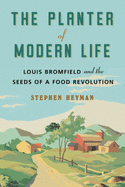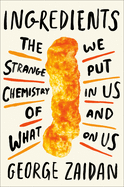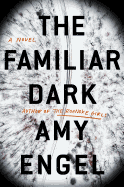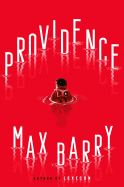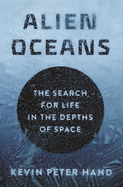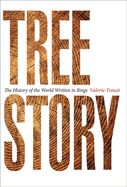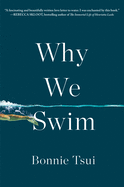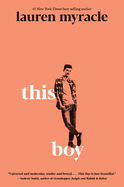Tuesday, April 21, 2020
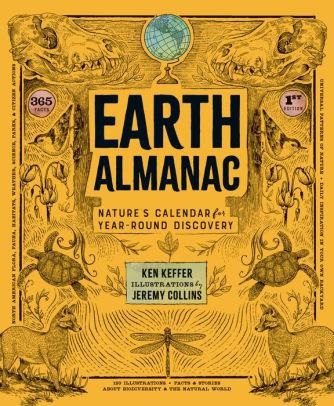 Many of us will be spending Earth Day at home for the first time in years. April 22, 2020, marks the 50th anniversary of the event, the brainchild of Gaylord Nelson, U.S. senator from Wisconsin, who was moved to start a "national teach-in on the environment" after he witnessed the devastation of a 1969 oil spill in Santa Barbara, Calif.
Many of us will be spending Earth Day at home for the first time in years. April 22, 2020, marks the 50th anniversary of the event, the brainchild of Gaylord Nelson, U.S. senator from Wisconsin, who was moved to start a "national teach-in on the environment" after he witnessed the devastation of a 1969 oil spill in Santa Barbara, Calif.
Thanks to Earth Almanac: Nature's Calendar for Year-Round Discovery by Ken Keffer, illustrated by Jeremy Collins (Skipstone Press, $24.95), readers young and old can celebrate the great outdoors all year long. Keffer, a naturalist and educator, begins with the winter solstice, December 21, noting, "the darkest days of winter are now officially in the past." He then explains why it's the shortest day (in the Northern Hemisphere) and organizes the book around the seasons. Jeremy Collins's pen-and-ink illustrations with watercolor wash simulate a field guide, as he sketches a pair of horned owls in the act of squatting in another bird's nest, a spotted skunk just after it's unleashed its spray (Keffer explains it takes 10 days for a skunk to "restock the spray supplies" and suggests a shampoo for pets that's more effective than tomato baths), even a dinosaur track!
 Readers may read the day's entry, dip in and out, or power straight through, searching for family activities, such as putting out a feeder or fruit to attract butterflies and using a white sheet to enhance moth-watching. Keffer covers a wide range of the sciences, from botany to astronomy, dots the pages with humor ("Were there ever any flamingos... in Flamingo, Florida?"--and goes on to give the sobering answer), as well as surprises: Did you know that beluga whales molt (as do orcas and bowhead whales)? A handy index highlights entries that tie in with "Citizen Science Opportunities," as well as specific animals, flora and fauna. --Jennifer M. Brown, senior editor, Shelf Awareness
Readers may read the day's entry, dip in and out, or power straight through, searching for family activities, such as putting out a feeder or fruit to attract butterflies and using a white sheet to enhance moth-watching. Keffer covers a wide range of the sciences, from botany to astronomy, dots the pages with humor ("Were there ever any flamingos... in Flamingo, Florida?"--and goes on to give the sobering answer), as well as surprises: Did you know that beluga whales molt (as do orcas and bowhead whales)? A handy index highlights entries that tie in with "Citizen Science Opportunities," as well as specific animals, flora and fauna. --Jennifer M. Brown, senior editor, Shelf Awareness
The Familiar Dark
by Amy Engel
The Familiar Dark, Amy Engel's fast-paced, twisty thriller, follows up her bestselling The Roanoke Girls, and trails Eve, a single mother, on her path of blind revenge to find the murderer of her 12-year-old daughter, Junie. Eve has gotten her life together since becoming Junie's mother as a teenager, and she's distanced herself from her own abusive, poverty-stricken mother. But now that Junie is gone, Eve is left with nothing but the void of her own anger and her determination to punish the killer. As Eve tracks down drug dealers, pedophiles and crooked cops, she begins to wonder just how close to home the murderer might actually be.
The Familiar Dark is impeccably plotted. Despite introducing a hefty cast of shady, violent characters, the narrative's masterful misdirection and ability to build trust and mistrust around specific characters at key moments keeps readers guessing until the novel's final act. The story's true strength, however, is in the cohesion and emotive power of its themes of motherly love, vengeful defiance and female rage. Eve is a new breed of hard-boiled detective, still sporting the hard exterior and haunted past, but this time toughened by love and haunted by what it means to be a strong woman in a powerless situation. The novel digs deep into the gritty, cold undersoil of Eve's hometown, never shying away from the biting realism of sexism and poverty. But it is the shocking moments of tenderness and love these characters show one another that packs the biggest emotional punch and reminds readers where true power resides. --Alice Martin, freelance writer and editor
Discover: The thoughtful exploration of legacies of violence and the force of a mother's love shape this riveting thriller.
Science Fiction & Fantasy
Providence
by Max Barry
Providence, Max Barry's follow-up to the immensely entertaining Lexicon, is yet another example of his ability to deliver big ideas in the form of breathlessly efficient sci-fi thrillers. The title comes from the name of the enormous spaceship, Providence Five, that carries the novel's four protagonists into a far-off war against aliens, colloquially called "salamanders." The spaceship largely runs itself, thanks to an advanced artificial intelligence, leaving the crew members to stew in routine and boredom. At first, the story belongs to a long tradition of books and films about isolated spacefarers slowly going insane, but Providence adds a number of twists and turns.
The artificial intelligence pilots Providence Five deep into enemy territory, and its powerful weapons kill hundreds of thousands of salamanders before they can put up a fight. Barry's futuristic warfare is conducted at a dispassionate remove that echoes the modern use of drones and missile strikes. Meanwhile, the crew engages in a propaganda offensive: posting messages on social media to maintain public support for a hugely expensive war with uncertain goals.
Readers will not have trouble picking apart the political commentary baked into the plot, but Providence pushes past easy contemporary parallels to concern itself with existential questions of free will and purpose. For all the novel's heady ideas, though, Barry maintains a nonstop pace and an economical, riveting prose style. The subject matter can be heavy, but Providence is ultimately a lot of fun, easily read in a sitting or two. As always, Barry excels at hitting the sweet spot between brainy and entertaining. --Hank Stephenson, manuscript reader, the Sun magazine
Discover: This smart and fun take on military science fiction meditates on the increasingly dispassionate nature of warfare.
Biography & Memoir
The Planter of Modern Life: Louis Bromfield and the Seeds of a Food Revolution
by Stephen Heyman
In the skillfully written, assiduously reported The Planter of Modern Life: Louis Bromfield and the Seeds of a Food Revolution, Stephen Heyman attempts to rescue a forgotten artist from obscurity not for his artistic contributions but for something else entirely.
Born in Mansfield, Ohio, Louis Bromfield (1896-1956) published his first novel, The Green Bay Tree, to acclaim in 1924. (His third novel, Early Autumn, would win the Pulitzer Prize.) While making the expat scene in Paris, Bromfield became a rival of Hemingway--at least in Hemingway's eyes. When Bromfield and his wife, Mary, rented a house in the medieval French city of Senlis, his love of gardening overtook his love of writing, although he continued to publish bestselling books. In 1938, with Hitler on the march, Bromfield moved his family, which now included three children, to Ohio--he was determined to raise his kids on a farm, as he had been. Malabar Farm would not be the residence of a dilettante; writes Heyman, Bromfield's "celebrity, his creativity, his money--all of it would eventually go into the compost pile."
Bromfield's high-profile conservation efforts included speaking about the dangers of pesticides at a congressional hearing in 1951, although he had been railing against DDT use since it became widely available in 1945. The Planter of Modern Life, enhanced with several dozen photos, makes a sturdy case that Bromfield was a pivot in the environmental movement's transition from "the Dust Bowl and The Grapes of Wrath to Earth Day and Silent Spring." --Nell Beram, author and freelance writer
Discover: This biography convincingly argues that forgotten novelist Louis Bromfield is worthy of reappraisal--not for his writing but for his heroic conservation efforts.
Essays & Criticism
Synthesizing Gravity: Selected Prose
by Kay Ryan
"It is difficult/ to get the news from poems/ yet men die miserably every day/ for lack/ of what is found there." Whether or not you agree with that ominous pronouncement from William Carlos Williams, you will come away from former U.S. Poet Laureate and MacArthur Fellow Kay Ryan's refreshing Synthesizing Gravity: Selected Prose--her first collection of nonfiction--with a deeper appreciation of poetry's worth.
The 32 pieces in this volume balance criticism (more appropriately, appreciation--save for a mild poke at Walt Whitman) of some of Ryan's favorite poets and other literary essays with a few helpings of memoir. Most of her subjects, including Emily Dickinson, Marianne Moore, Wallace Stevens and Robert Frost, will be well-known to even casual students of poetry. But Ryan devotes two affectionate, if candid, essays to the British poet Stevie Smith, someone who "does everything possible to cartoonify herself and her work," yet whose poems "can't in the long run be separated from the True, the Beautiful, the Timeless, the deeply moving."
Ever the iconoclast, Ryan derides the common advice to poets (or writers in general for that matter) to keep a notebook. To her, they are "the devil's bible. They are the books of understanding later." But despite her admonition about the "importance to the poet of avoiding or ignoring Kodak moments," Ryan writes with great feeling about the day she became a poet, "a mystery before which one must simply bow down." In her case, it occurred in the Colorado Rockies, on a cross-country bicycle trip she took in 1976, at age 30. The rest, as one might say, is history. Or poetry. --Harvey Freedenberg, freelance reviewer
Discover: An eminent American poet turns to prose to illuminate her craft and her life.
Science
Ingredients: The Strange Chemistry of What We Put in Us and on Us
by George Zaidan
In Ingredients: The Strange Chemistry of What We Put in Us and on Us, George Zaidan delivers an enthusiastic introduction to nutritional epidemiology, or "the study of what foods are going to send you to an early grave." It's a user guide for readers who want to determine for themselves what foods are healthy, which chemicals are safe to apply on skin and how to interpret health-related scientific studies.
Zaidan is a scientist with a passion for chemistry and a robust media presence as the co-host of CNBC's popular show Make Me a Millionaire Inventor. He has made a name for himself translating science into everyday English in a way that both entertains and enlightens his television and web audiences. In Ingredients, he explains the complex chemical actions by which plants process sugar, starch, protein and fiber and how toxic plants are transformed into edible food. Readers will learn fascinating facts about how the human body responds to ingredients both natural and manmade. The humble Cheeto receives a good deal of attention as representative of the ultra-processed food category that makes up 58% of the typical American diet.
For long-term health decisions, it's important to know if convenience foods are bad for you. Or as the author phrases it, how much is life shortened with each bag of Cheetos, if at all? Using simple illustrations and his trademark humor to demystify scientific analysis that doesn't always prove cause and effect, Zaidan empowers readers to make their own dietary decisions and encourages a healthy skepticism toward attention-grabbing health and wellness news headlines. --Shahina Piyarali, writer and reviewer
Discover: A popular scientist offers perspective on whether sunscreen prevents skin cancer and explores dietary dilemmas with wit and brevity.
Alien Oceans: The Search for Life in the Depths of Space
by Kevin Hand
In Alien Oceans: The Search for Life in the Depths of Space, Kevin Hand, a scientist at NASA's Jet Propulsion Laboratory, outlines the latest evidence regarding undersea extraterrestrials and speculates what else science may uncover. If alien life exists inside our solar system, it will likely be found in oceans of liquid water encased in shells of solid ice. Evidence shows that several moons around Jupiter and Saturn--particularly Europa, Titan, Enceladus and Callisto--harbor interior oceans in which life may have evolved despite a total lack of photosynthesis. Robust ecosystems surrounding heat vents in the sunless depths of Earth's oceans suggest that these far-flung satellites, so seemingly inhospitable to humans, could contain microbes or even complex organisms.
Hand demonstrates how we know these oceans exist in the first place via mass spectrometry, gravitational and magnetic readings. He then examines the chemistry at work on these worlds and how life might adapt to those conditions, acknowledging that the sample size of one--life on Earth--makes speculating about alien biology difficult, and that life may ultimately take surprising forms. One major unknown is the origin of life, whether the process of ubiquitous organic compounds developing into replicating cells is common or rare. It is possible, he admits, that Europa's salty seas may be barren, but Hand's comprehensive arguments leave one suspecting otherwise. Alien Oceans successfully straddles a fine line between accessibility and scientific thoroughness. Hand's book is as fascinating as it is optimistic. --Tobias Mutter, freelance reviewer
Discover: Intriguing science surveys the possibility of life emerging in ice-encased oceans on the moons of Jupiter and Saturn.
Tree Story: The History of the World Written in Rings
by Valerie Trouet
Tree Story begins with the mystery of whether Messiah, a legendary violin attributed to Stradivari, was indeed created by the master or was a skilled craftsman's knockoff. The answer was found in the age of the tree that yielded the instrument.
Valerie Trouet, associate professor at the University of Arizona's Laboratory of Tree-Ring Research, adopts an engaging style sure to capture the attention of any nature lover, then pulls readers deeper into the world of dendrochronology. With humor, she describes science gone astray (her equipment was stolen when she was in Tanzania to collect tree rings) and how science mixes poorly with money and politics (the science of dendrochronology was born at the University of Arizona due to a rift between a wealthy Mars-obsessed patron and the scientist A.E. Douglass, who tried to set him straight).
Trouet barely mentions that she's often the only woman on her fieldwork trips. Like Hope Jahren's Lab Girl, Tree Story exudes a passion for science and the planet. Trouet argues persuasively that trees can teach people about the correlation between drought and the fall of empires (from Rome to Genghis Khan), about global warming and, eerily in light of Covid-19, about pandemics.
If Tree Story occasionally delves more deeply into scientific specifics than readers may want to go, Trouet soon returns to the present, often with a clever turn of phrase. She will leave all readers thinking about what humans can do to appreciate the planet more and treat it better. --Jennifer M. Brown, senior editor, Shelf Awareness
Discover: A persuasive, entertaining explanation of how the codes contained in tree rings reveal the wide-ranging effects of climate change.
Nature & Environment
Trees in Trouble: Wildfires, Infestations and Climate Change Hit the West
by Daniel Mathews
Trees in Trouble "is a book for everyone who cares what happens to these trees, groves, and landscapes." Natural historian and lifelong backpacker Daniel Mathews concentrates on the history and decline of 12 pine species emblematic of the North American West. He provides a disconcerting look at how the landscape is transforming under the pressures of climate change, pests, pathogens and ill-conceived fire suppression strategies. Trees are seeking relief from grave circumstances causing their demise: "Groves where we sought refuge will themselves be refugees."
"Threats to forests today are bewilderingly numerous," he writes. While Mathews concedes we cannot restore the status quo of even the year 2000, it is possible to take on the enormous challenge of influencing our forests for the better. He explains with scientific authority how warmer temperatures and reduced precipitation trigger migration of species, a natural occurrence made problematic by marginal habitats that no longer support trees.
Even more fascinating is our relationship to fire and how a poor understanding of wildfire dynamics has increased the occurrence of firestorms and deadly fire vortices (California's 2018 Carr fire produced winds of 143 miles per hour, equivalent of an EF-3 tornado). Human actions have increased fire fuels while lessening trees' ability to adapt and recover, also negatively affecting water and air. Not all gloom and doom, in "Future Forests" Mathews speaks eloquently of what can be expected and how people can influence change. Trees in trouble means trouble for us all, as they make every breath possible. --Lauren O'Brien of Malcolm Avenue Review
Discover: A Pacific Northwest natural historian explores the fate of our forests, currently staggering under the weight of extreme fires, climate change and pest epidemics.
Nature Obscura: A City's Hidden Natural World
by Kelly Brenner
When considering places to discover the wonders of nature, cities are often dismissed as little more than havens for rats and pigeons. But as naturalist Kelly Brenner shows readers in Nature Obscura, urban areas are surprisingly fertile grounds for the citizen scientist to explore.
Using her hometown of Seattle as a guide, Brenner surveys the city's flora and fauna through the four seasons. Anna's hummingbird, a fairly recent arrival (1965) to the Pacific Northwest, must eat double its body weight every day in order to survive, while the moon snail takes two weeks to consume a clam. The resilient muskrat has acclimated to a changing landscape by creating new dens and adapting to different food sources, while the ubiquitous crow finds the city less threatening than the countryside. But it's the smallest creatures among us that excite Brenner the most. The microscopic tardigrade, found in Brenner's rooftop moss, has survived mass extinctions; also known as a water bear, it's cute to boot. On the opposite end of the spectrum is Fuligo septica, more commonly known as the dog vomit slime mold--but not all slime molds are alike; one species of Craterium looks like "a champagne flute filled with fireworks."
Brenner brings an infectious curiosity to urban nature--whether unpacking how the tiny stickleback fish has, in a rare case of reverse evolution, transformed to lose and regrow its plates of armor in response to pollution, or considering whether lichens really ever die, as they increase reproduction the older and larger they get. With Nature Obscura, readers need not venture far to discover a natural world teeming with life. --Frank Brasile, librarian
Discover: Nature Obscura will inspire inquisitive urban naturalists to explore wildlife in the city.
Sports
Why We Swim
by Bonnie Tsui
Journalist Bonnie Tsui (American Chinatown) submerges her story of how and why she's come to be intrigued with all facets of human aquatic experience in a larger investigation into the historical evolution of swimming.
Tsui's parents met at a swimming pool in Hong Kong. Tsui learned to swim at the age of five and, growing up, spent many hours in the surf at Jones Beach, a heavily frequented summer destination on Long Island. Tsui credits the recreational practice of swimming for keeping her afloat through her parents' divorce, college, knee surgery and miscarriage. Now, she's an adult and mother of two young children, swimmers themselves. Tsui continues to swim in pursuit of peace, pleasure and exercise, while also on a quest to understand the many reasons why humans, who are not natural-born swimmers and must be taught, have always been drawn to water.
From this foundation, Tsui dives deeper into eclectic stories about collective and individual swimming experiences, including Olympic athlete Michael Phelps, who mentally calms his symptoms of ADHD through conditioning rituals and competitive swimming trials. The most fascinating case studies in the book, however, center on incredible plights. Guðlaugur Friðþórsson, an Icelandic fisherman, was forced to swim for his survival for six hours in dangerously frigid ocean waters when his vessel went down in the 1980s.
In presenting each story, Tsui shares what the water and swimming means to each individual, while also tying in inspiring insights. Tsui is a poetic writer whose flowing, immersive prose and colorful storytelling will hold significant appeal for readers--especially swimmers--of all curiosities. --Kathleen Gerard, blogger at Reading Between the Lines
Discover: A journalist shares her passion for swimming as sport, survival and mental sustenance, setting it in the larger context of aquatic history.
Children's & Young Adult
The Cat Man of Aleppo
by Irene Latham and Karim Shamsi-Basha, illus. by Yuko Shimizu
Poet Irene Latham (Can I Touch Your Hair?) joins forces with Syrian American photojournalist Karim Shamsi-Basha to tell the heartening true story of an ambulance driver who is making war-torn Syria a better place. Mohammad Alaa Aljaleel's selfless work and immeasurable kindness have inspired people around the world, including the book's authors, whose collaboration with illustrator Yuko Shimizu befittingly spotlights Alaa's heroism for readers of all ages.
The Cat Man of Aleppo is the moving tale of a paramedic and ambulance driver who opts not to abandon his homeland when the country's civil war destroys his beloved Aleppo. When people are forced to flee the war's violence, most can't take their pets along. The helpless animals are left to fend for themselves on the streets. Alaa embraces the multitude of abandoned cats throughout the city; he starts out feeding the felines and showering them with love, and ultimately creates a sanctuary to keep them all safe. "Bombs may still fall, and his loved ones may never come back to Aleppo. But there is something he can do: he can look after the cats."
Latham and Shamsi-Basha simply and charmingly relate Alaa's deeds, enabling young readers to connect closely with their subject. Alaa's admirable actions offer the audience an excellent example of how simple acts of kindness can create large ripples of change. Shimizu's accompanying digital and black ink on watercolor paper illustrations carry readers directly into Alaa's world. Despite the challenging subject of war, in both words and illustrations, a sense of hope permeates the whole book. Alaa's story is one of faith in humanity, the power of compassion and the benefits of altruism. --Jen Forbus, freelancer
Discover: A humble hero makes an extraordinary difference in war-torn Syria when he attempts to take care of all the city's orphaned cats.
This Boy
by Lauren Myracle
This Boy by Lauren Myracle (The Infinite Moment of Us; Shine) convincingly charts a young man's four years of high school as he bonds with his best friend, navigates coupledom and struggles to recover when loss tips him into drug addiction.
Paul and Roby typify high school best bros: they destroy each other in video games, try (and fail) to impress girls and dream of rooming together in college. Though they fall "out of sync" over Paul's girlfriend, the boys quickly return to status quo. Roby, never "afraid of looking ridiculous," cracks Paul up but can also deliver a "proper roasting": he tuts over Paul's purple drank habit but blatantly discourages Xanax and cocaine. Then, when Paul loses someone, he turns against Roby's advice and toward benzodiazepines and alcohol. Living in "teeth-gritting pain" and tortuously "elasticized moments," Paul feels dead inside as he searches for a way out.
Lauren Myracle's characters are perfectly pitched. Paul overshares, describing nose picks, farts, wiping Cheetos dust on his couch, masturbation and sex, lending credibility to his first-person narrative. He reflects on how his perception of girls is influenced by societal norms and biological drives, wondering whether some "girls like it when guys look at them," thinking it's "unfair to blame all males for the behavior of some males" and admitting, "I think about sex when I don't want to think about sex." In a tactful tonal shift, Myracle juxtaposes teenage shenanigans with a terrible death and a sobering reminder of a mounting drug crisis. Dripping with authenticity, This Boy is a frank depiction of the way recovering from grief and substance abuse can expand a person's world and force them to reevaluate themselves. --Samantha Zaboski, freelance editor and reviewer
Discover: This startlingly realistic coming-of-age YA novel portrays a high school boy experiencing friendship, first love, an unthinkable tragedy and drug addiction.
| Advertisement Meet belle bear! |


